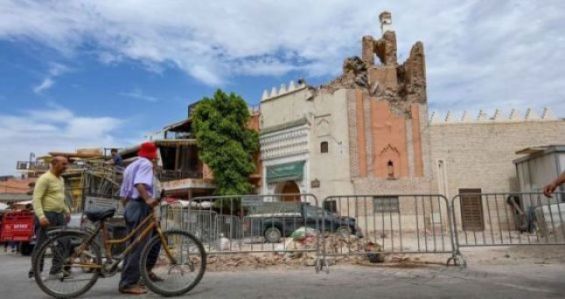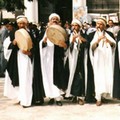With a death toll nearing 3,000, the Al Haouz earthquake has left a profound impact, not only in terms of human and material loss but also on economic activity. The local tourism sector, in particular, has been hit hard by this natural disaster. Known for its unique location between the mountains and its breathtaking landscapes, the region had been a popular destination for tourists from around the globe. However, the earthquake severely damaged much of the infrastructure, including numerous tourist facilities.
Faced with limited resources, those involved in the tourism sector now confront the daunting task of restoring, rebuilding, and promoting the Al Haouz destination. Said El Khatach, owner of Dar Atlas Ouadaker Amizmiz, shared that the earthquake destroyed the house he inherited from his ancestors, which he had transformed into a guesthouse in 2000.
In an interview with Yabiladi, the tourism operator expressed his frustration at being excluded from the support provided by the Ministry of Tourism to professionals, as his establishment is not classified and is considered a temporary tourist accommodation. «However, I was able to obtain government support for reconstruction since I lived there with my family», he noted.
Guesthouses used as homes excluded from reconstruction aid
Like many others in the region, Said El Khatach confirmed that the aid of 80,000 dirhams was «completely insufficient». After receiving the first installment of 20,000 dirhams, he had to dip into his own savings to lay the building’s foundations, a necessary step to secure the second installment of public support.
«It was both my home and my livelihood. But after the earthquake, things got much worse. Now, I live in tents I’ve set up to accommodate the guests who used to visit the shelter. I get a lot of calls from new customers, but when I explain the state of the building and suggest hosting them in tents instead, to organize tours in the area, they’re less enthusiastic».
Although tourists have gradually started returning to the region, according to Said El Khatach, «the situation isn’t the same, and improvement is slow».
Abdelaziz Lehrim, owner of the Gîte entre les deux Vallées, also spoke with Yabiladi. Although his building was not completely destroyed, it suffered significant cracks, leading to a drop in customer arrivals. «When they see the cracks, many don’t want to stay», he noted.
«I was badly affected by the aftermath of the earthquake and received no support. The authorities told me that since I live in the house with my family, they are only responsible for that type of accommodation, not the tourist areas», he lamented.
Like Said El Khatach, Abdelaziz relies entirely on his B&B, which has welcomed guests since 2005. «Right now, I have no means of subsistence, and sometimes I only have one or two visitors over several months», he shared, noting that he lacks the funds necessary for recovery.
Tour guides have also been impacted. Abdellah Benchouai, from the Association régionale des guides touristiques de la ville de Marrakech, is well aware of the situation. «I guide tours across the country, from mountainous areas to cities. Every day, I see the earthquake’s impact on the region», he explained. Reflecting on the period immediately after the earthquake, he added, «When the tragedy struck, tourism in the region came to an abrupt halt. Many customers canceled their bookings, which was expected».
«Tourist activities were initially suspended due to damaged infrastructure. Roads and shelters were affected, some partially or completely destroyed. As a result, guides had to find alternatives. We changed our destination from Imlil to Ouirgane, which was less affected», Benchouai added.
Highlighting local features for a fair economic recovery
The guide considers this a «great loss for the region and for tourism in general». He believes the reconstruction process «would have benefited from the supervision of specialists and engineers to preserve the region’s beauty, which would attract more tourists».
Benchouai added that guides are organizing visits to Al Haouz, Imlil, Amizmiz, and Tahannout to explore palaces and historical monuments. Despite his disappointment at the current state of these sites, there is hope, especially with ongoing restoration projects. Some ksours, like Ksar Oulad Abdelhalim in Errachidia, are currently being restored. Others, such as Ksar El Khorbat in Oujdid, have been restored through the joint efforts of NGOs and local associations.
The tourism operator expressed hope that these efforts would extend to other ksours and kasbahs with long histories but weakened structures, further exacerbated by the earthquake. Many are now at risk of collapse or are already in ruins. He also expressed concern about the impact of this tragedy on the Amazigh architecture specific to the villages of Imlil, Asni, and Ourika.
Benchouai believes that rebuilding to appropriate anti-seismic standards while preserving local architectural character is essential. «Preserving this heritage is what keeps hope alive for the return of tourists to the region», he asserted.





 chargement...
chargement...













